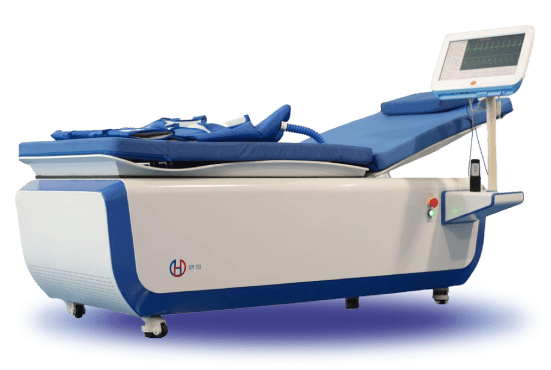EECP FAQ’s
We understand that you might have questions, and we’re here to provide you with clear and concise answers. In this Frequently Asked Questions (FAQ) section, we’ve gathered the most common queries from our users to make your experience as smooth and informed as possible.

Frequently Asked Questions
You might be qualified for EECP treatment if you:
- have persistent chest pressure or pain that fluctuates with stress or physical exertion.
- no longer get relief from taking medicine.
- don't meet the requirements for invasive procedures like surgery.
- experience resurrected symptoms following an invasive operation like angioplasty, stenting, or bypass surgery.
If you've previously experienced angina and are still looking for additional therapy or treatment, this non-invasive bypass surgery is the greatest option for you, and you are eligible for it. Additionally, EECP treatment is a wonderful choice if you require treatment but prefer to avoid surgery.
To know if you are eligible for EECP therapy, contact our heart experts today.
If you want to know if you are eligible for EECP therapy, go to your doctor. Pregnant women shouldn't receive EECP treatment. For those who have congenital heart disease or other issues, doctors might suggest alternative solutions. Some of the conditions not recommended for EECP are:
- Aneurysm
- Atrial fibrillation.
- Clots of blood.
- Congenital heart condition.
- Hemorrhage.
- Tachycardia, or rapid heartbeat.
- Pulmonary hypertension.
- Peripheral Arterial Disease
However, it is always recommended to consult our doctors before enrolling or starting treatment.
EECP has been successfully completed by patients as young as 20 and as old as 90 Plus without any issues. Despite their advanced age, several of our patients had great outcomes.
Patients who have been given a diagnosis of angina (stable or debilitating) (NYHA - Class I, II, III or IV)/ MI and/or who are not ready for surgical intervention (like PTCA or CABG) because of reasons like not interested or are not eligible for surgical treatment. Also if coronary anatomy makes such treatments more difficult to perform; their condition makes surgery impossible or highly likely to result in complications or postoperative failure; or they have comorbid conditions (like severe Hypertension, DM or Low EF) that increase risk are eligible for EECP
Ideally eligible patients for EECP Treatment are - Angina, Post-MI (heart attack), Heart Failure, CAD etc. It is advisable that one should consult our doctors to ensure their benefits before taking any other decision.
Decompensated heart failure, aortic insufficiency, severe mitral or aortic stenosis, uncontrolled hypertension, and heart rates higher than 120 beats per minute are among the conditions that require EECP precautions. Before beginning treatment, individuals with heart failure should be stable and their high blood pressure and heart rates should be under control. The common adverse effects of EECP are equipment-related and include leg and back pain, skin abrasion, bruising, blistering, edema, and paresthesias. EECP is well tolerated.
If your symptoms come again, consult your doctor. 20% of patients require additional EECP treatment, especially those who did not finish the original 40-hour course.
ECCP technique is known as "natural bypass" by the doctors and is regarded as a relaxing, non-invasive, and safe treatment method. They contend that EECP therapy stimulates collateral blood flow in addition to increasing blood circulation throughout the body. In addition to bypass surgery, EECP helps patients with various cardiovascular issues such heart failure, hypertension, coronary artery disease, and chest pain. Over and above EECP therapy is the only option for patients who have already undergone angioplasty or surgery but are still experiencing symptoms. We leave it to you to decide what is better? If you have any questions, suggest meeting our trained doctors.
Depending on the facility, the doctor, and the region/location, EECP treatment in India varies in price.
EECP treatment is strongly implied to be quite effective in many circumstances by the available evidence. In addition, patients can fairly accurately determine whether it significantly lessens angina symptoms. It is non-invasive, tolerable and safe.
EECP therapy is an outpatient treatment approved by the FDA to manage chronic stable angina effectively.
The safety and tolerability of EECP have been established, and its most common adverse effects—leg and back discomfort, skin abrasion, bruising, blistering, edema, and paresthesia or tingling sensation —are equipment-related.
This kind of treatment may also stimulate blood vessels to widen existing passageways, allowing more blood to reach your heart. If your coronary arteries are restricted or blocked, these channels gradually develop into "natural bypass" vessels that assist in
- Reducing angina symptoms.
- Develop your endurance and stamina.
- Extended length of exercise.
- Enhances deep sleep.
EECP treatment is strongly implied to be quite effective in many circumstances by the available evidence. In addition, patients can fairly accurately determine whether it significantly lessens angina symptoms. It is non-invasive, tolerable and safe.
